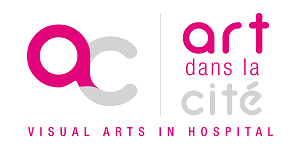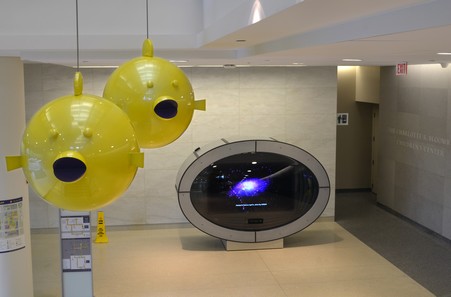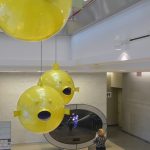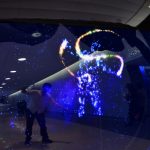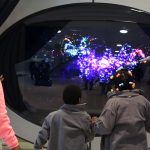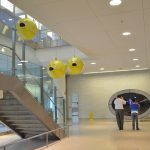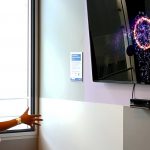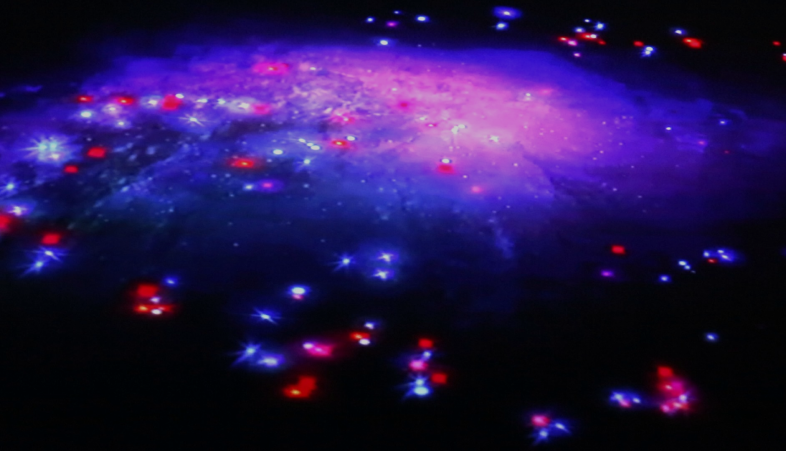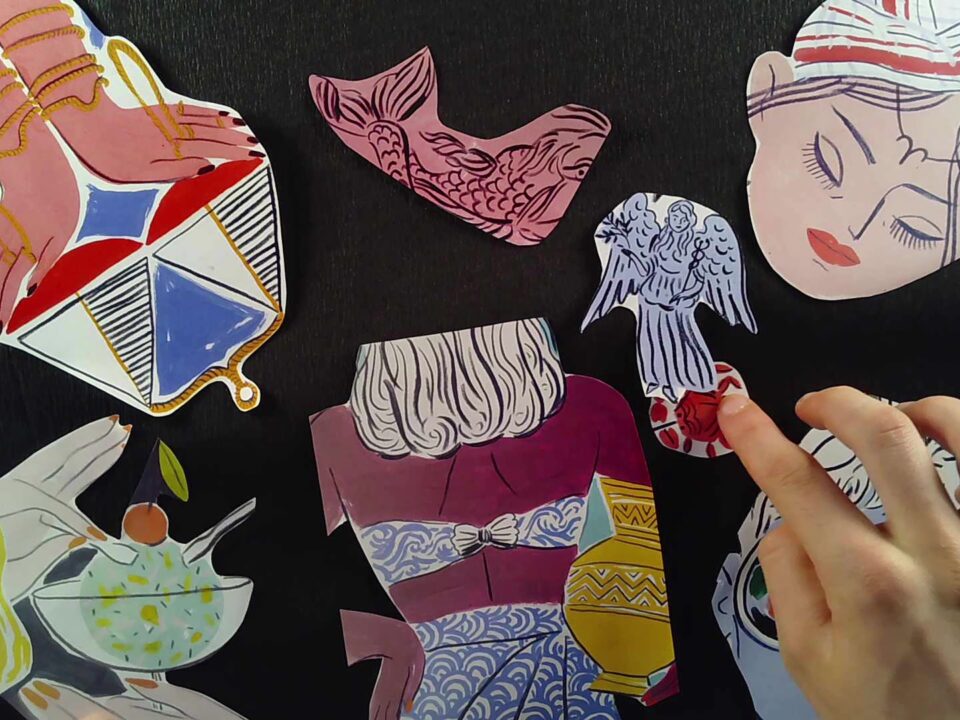
The measure of the possible
24 October 2014
Virtual Aquarium
12 December 2016Interactive Music Planetarium
The Project
THE INTERACTIVE MUSICAL PLANETARIUM is an interactive audiovisual installation created especially and simultaneously in 2015, for the Necker Enfants Malades Hospital in Paris, APHP, and the Johns Hopkins Children’s Center in Baltimore USA.
It is an installation that offers a space for creation, expression and introspection. It is as much of interest to the contemplative spectator as it is to the one who wishes to interact. The work can thus be contemplated as well as explored through interaction. One of the main objectives is to make children feel integrated and connected with the rest of the world so that they feel less alone and isolated. It proposes to interact with the stars, the universe, to create something beautiful and grandiose at the macrocosm scale. It encourages us to be more attentive to the correspondences between the external environment and the internal universe, to realize that we have the power to have a positive impact on the harmony of the microcosm, on our psyche, on our general state of well-being. Through the different modalities of interaction, it offers, the Interactive Musical Planetarium leads patients to be more attentive to their bodies, their posture, their positions and movements in space, their emotions and the relationships they have with others. Facial expressions, body postures and movements have a direct impact on our psyche: a smile, even a forced one, helps us feel better, and standing up straight, breathing deeply, gives us more confidence.
The visual content evokes a starry sky. It is algorithmically generated in order to interact with the behavior of the spectators. Crystalline and sparkling sounds will be favored for the stellar elements, each note being like a small star. For the more vaporous nebulous-like elements, more granular sounds, evolutionary, encompassing and harmonically rich synthetic layers, oscillating on different periodicities to offer a musical counterpoint to the visual breathing cycles of the stars.
Five modes of individual interaction are proposed according to the distance of the person considered from the screen: Position and movement in space, Hand gestures, Shape of the silhouette and posture, Orientation of the face, Morphology of the face and facial expression. The different melodic lines and stellar musical designs can be exchanged between the two hospitals to create communication between patients.
The Hospital
Johns Hopkins Children Center Baltimore USA : https://www.hopkinsmedicine.org/johns-hopkins-childrens-center/index.html
Hôpital Necker enfants malades Paris : http://hopital-necker.aphp.fr/
